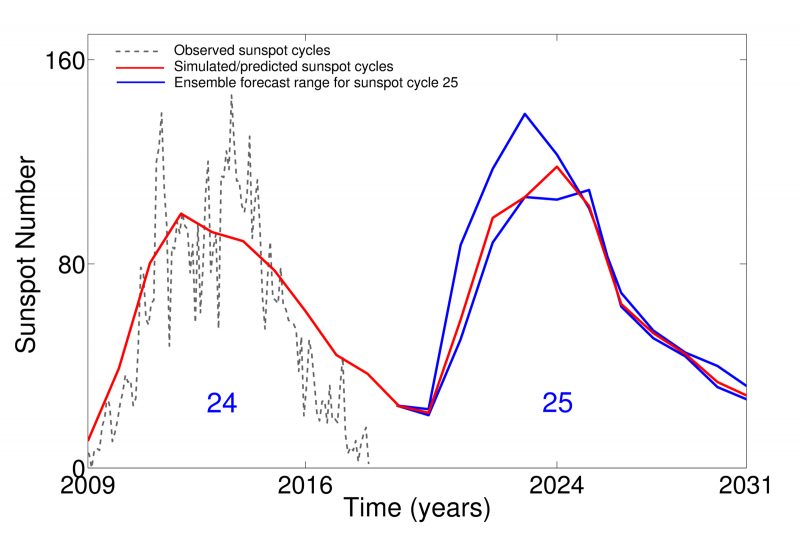EarthSky.org's What will the sun do next? says:
On December 6, 2018, the Center of Excellence in Space Sciences India (CESSI) reported that two of its scientists have made a prediction for the upcoming sunspot cycle. Solar physicist Dibyendu Nandi and his Ph.D .student Prantika Bhowmik devised a new prediction technique, which simulates conditions both in the sun’s interior, where sunspots are created, and on the solar surface, where sunspots are destroyed.
Earlier predictions (like this one) have suggested the coming sunspot cycle 25 will be weaker than the current cycle 24. But, based on their model, Nandi and Bhowmik believe cycle 25 might be similar to or even stronger than 24. They expect the next cycle to start rising about a year from now and to peak in 2024. Their work was published December 6, 2018, in the peer-reviewed journal Nature Communications.
There are plans to build a Lunar Orbital Platform or Gateway around the Moon for astronauts to visit, and use to travel to the Moon's surface.
The goal of this within five years has been mentioned, though it might take a little longer. Either way this will be happening during a period of increases solar activity, possibly even near solar maximum!
How will the radiation issue be addressed on the Lunar Orbital Platform around a solar maximum
How long could astronauts stay on the Lunar Orbital Platform then, without significant risk to their health?
Bhowmik and Nandi prediction for sunspot cycle 25 compared with the current sunspot cycle 24. The work suggests the coming sunspot cycle will be similar to or slightly stronger than the activity levels that are just ending. Image via CESSI.
